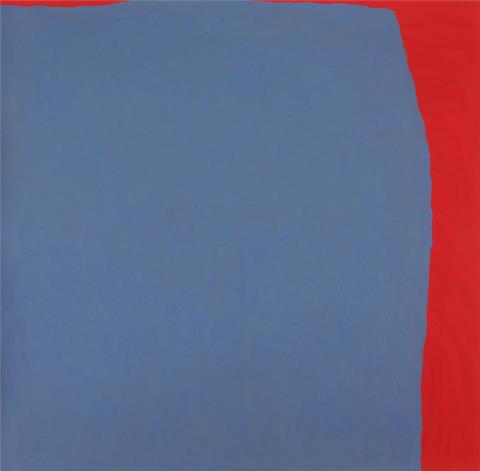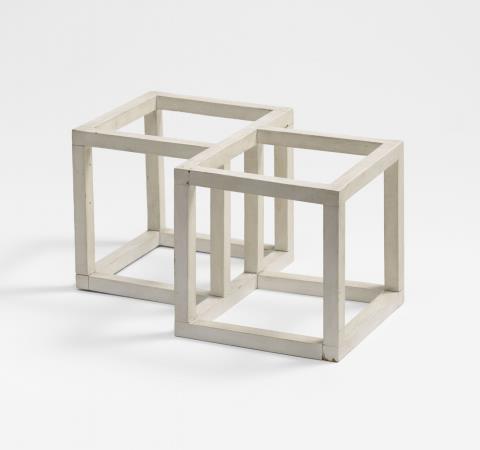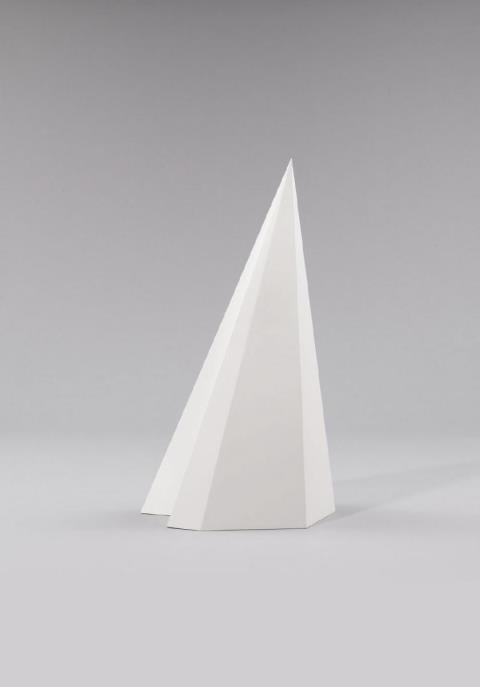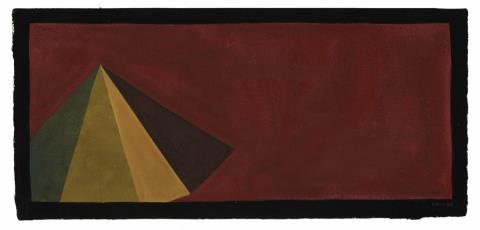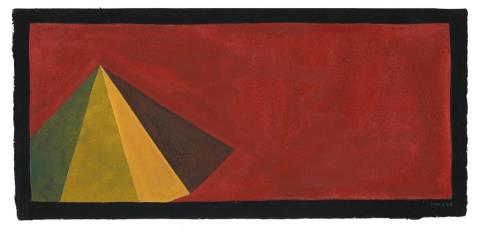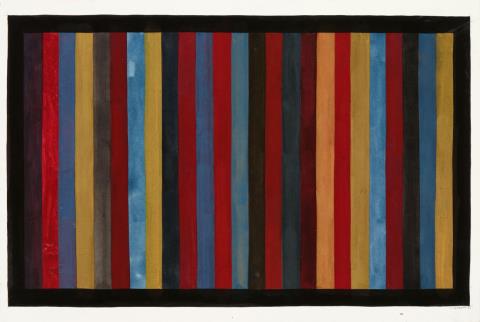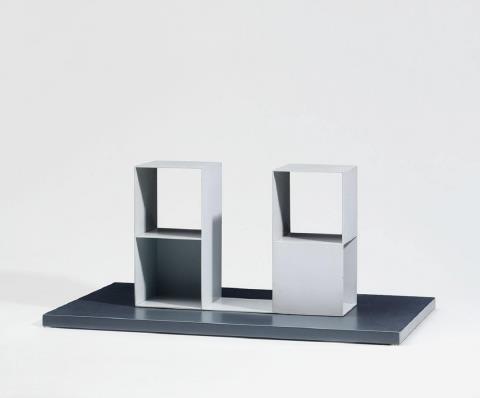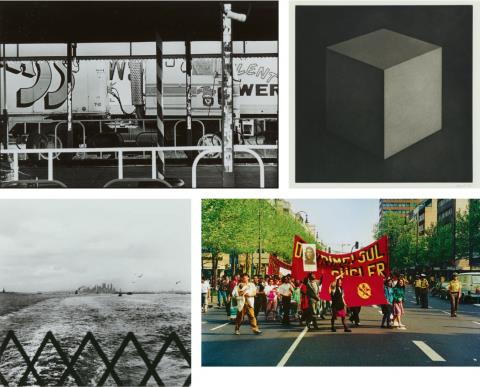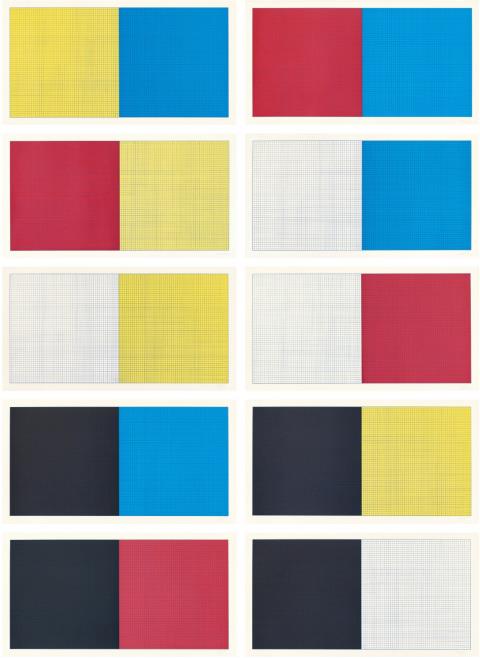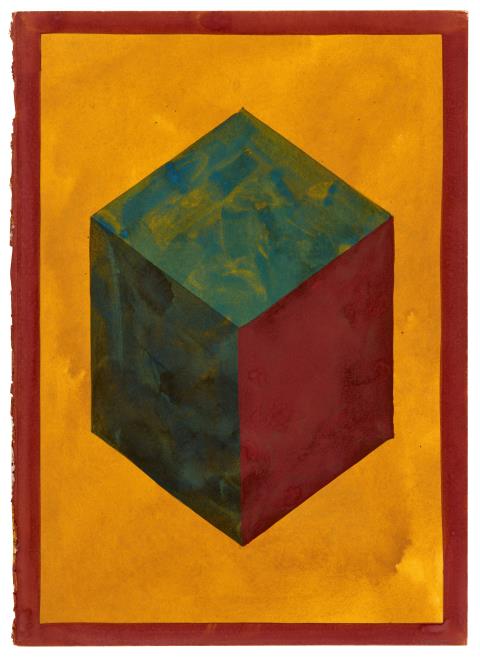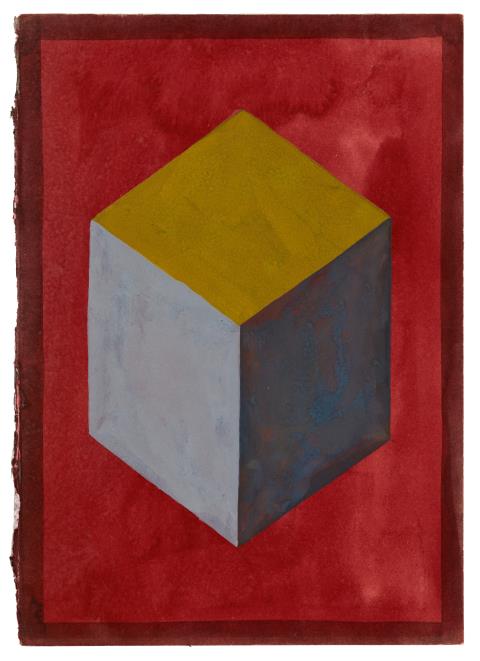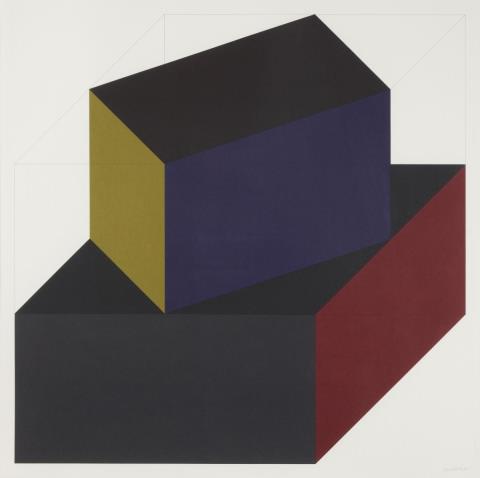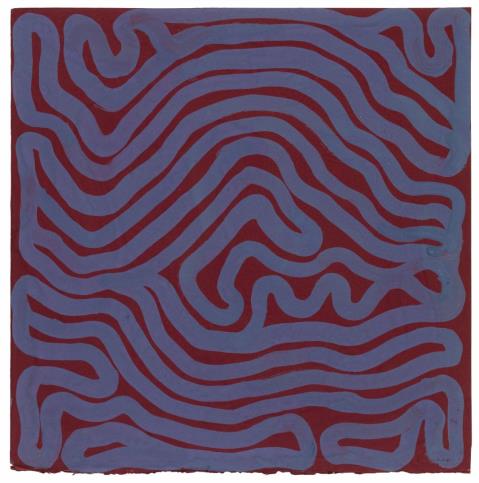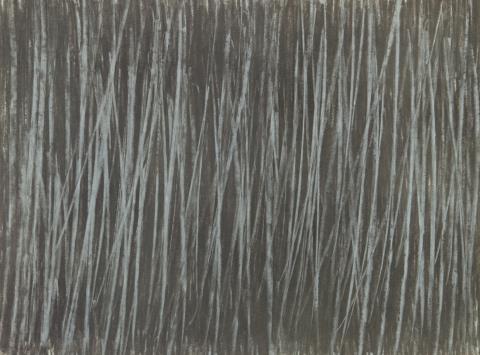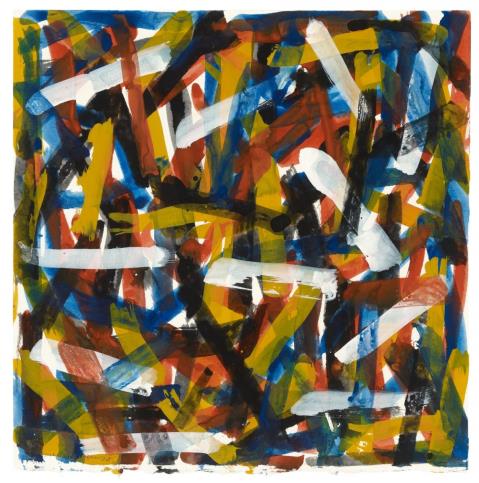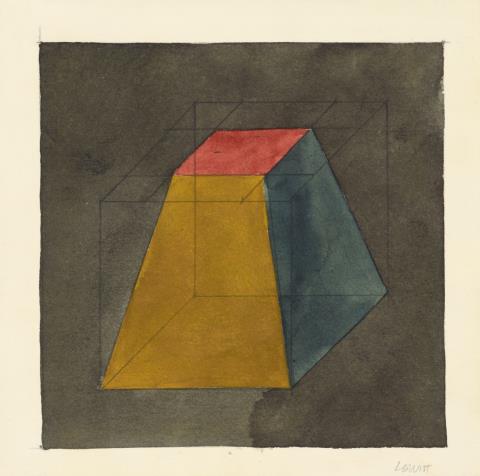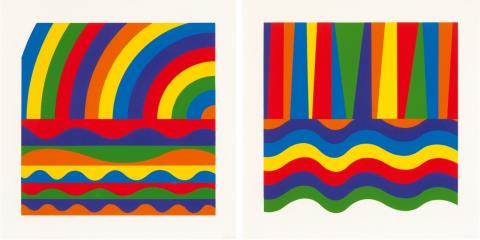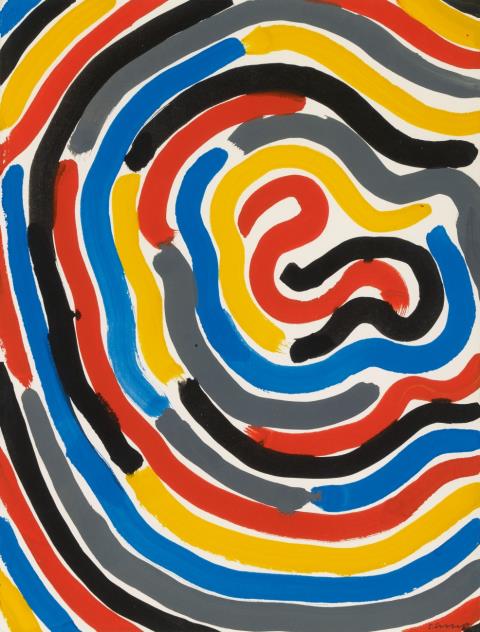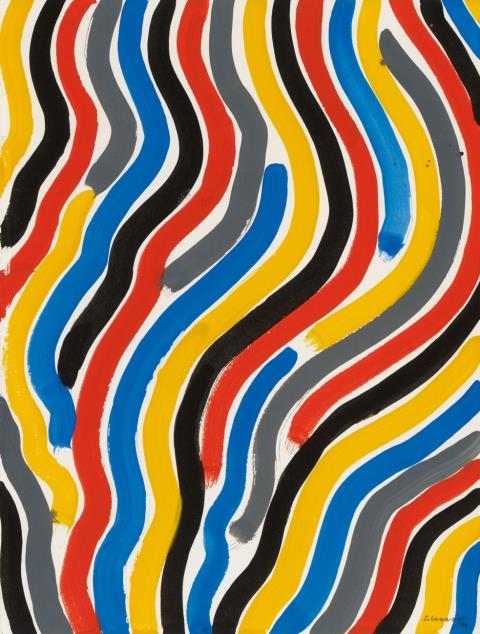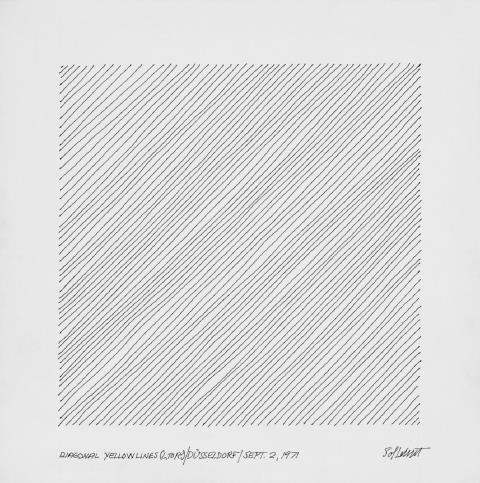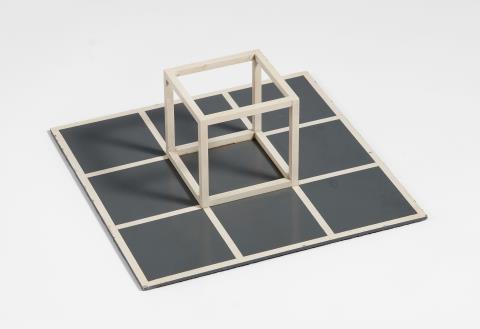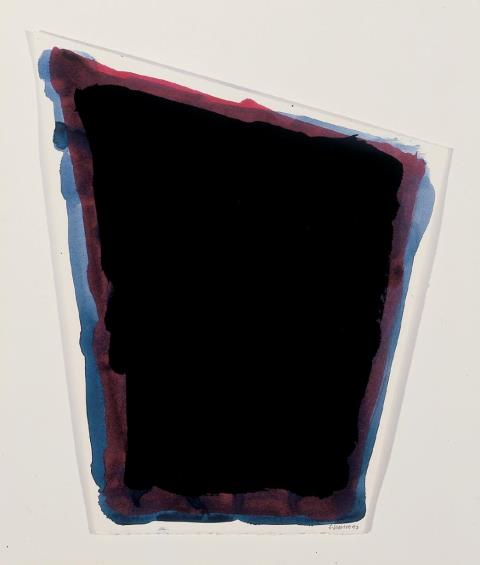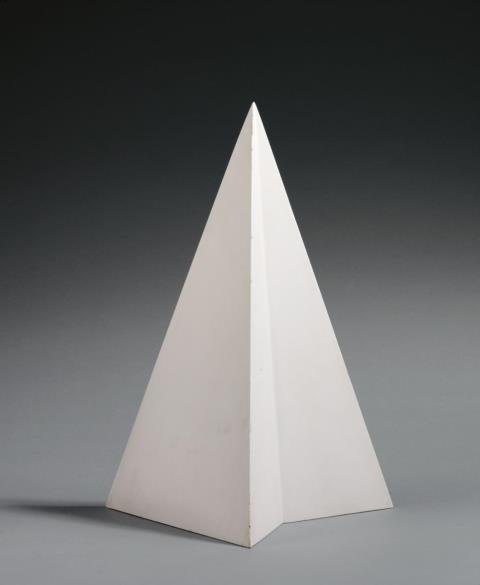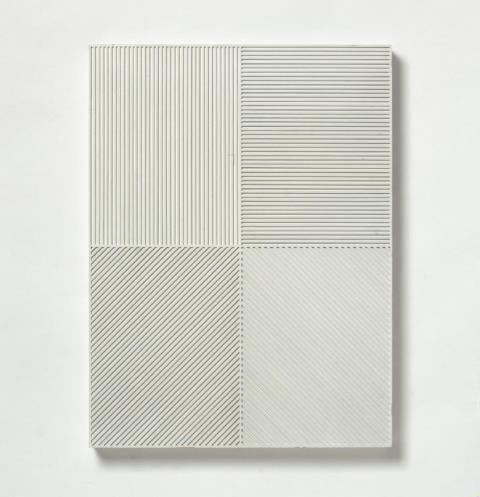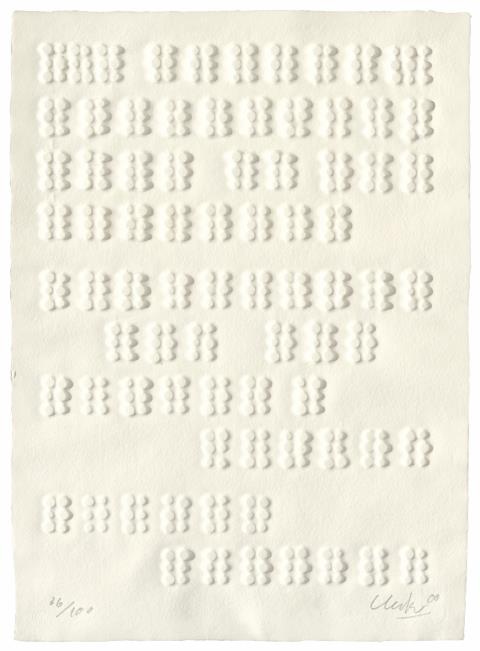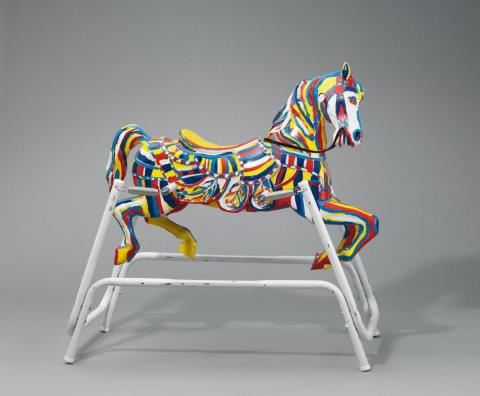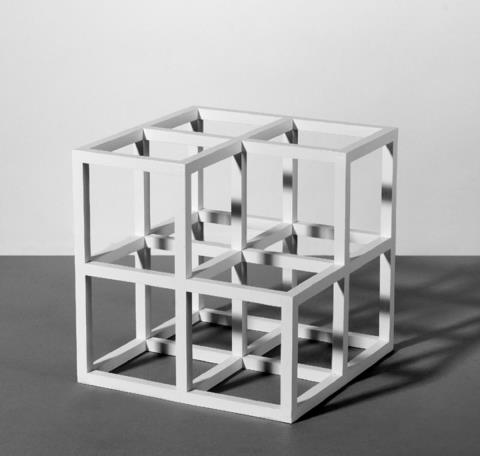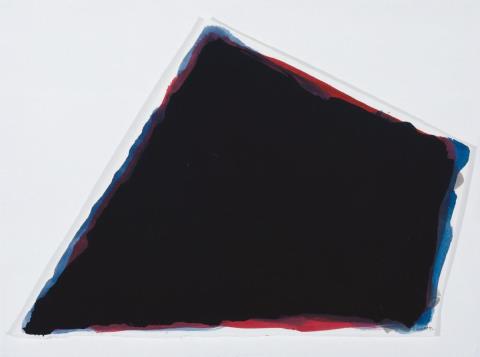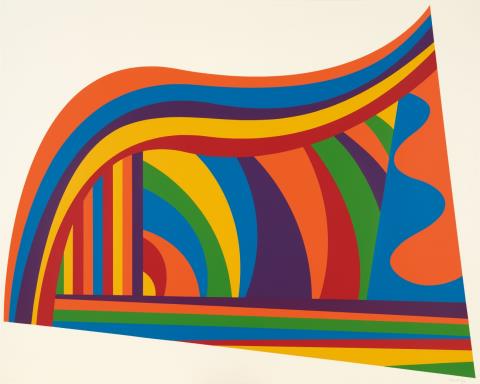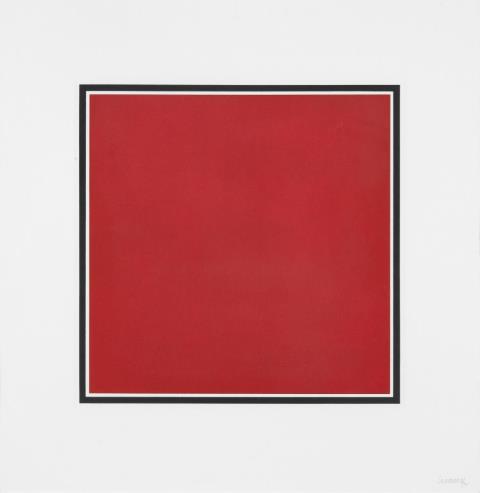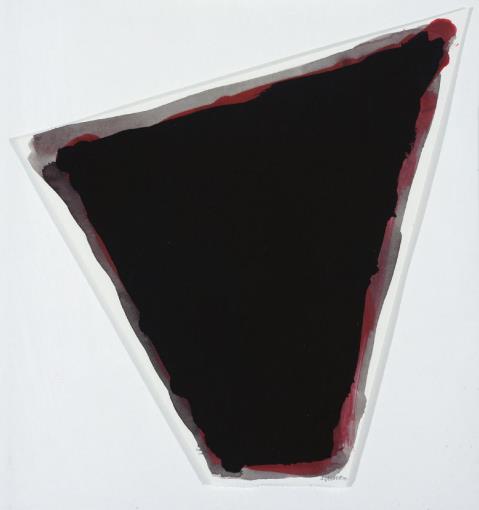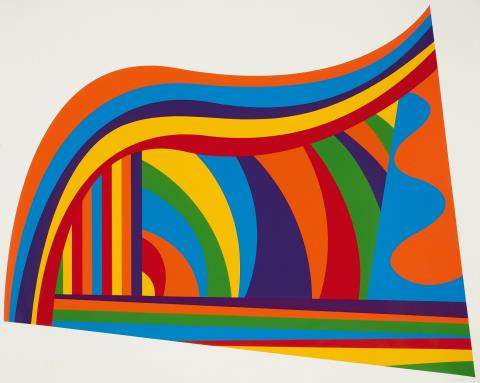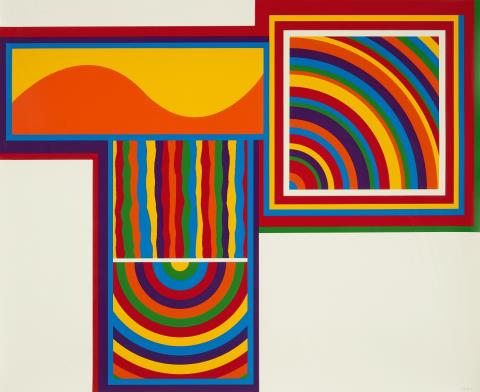Sol LeWitt – Early artistic encouragement from his mother
Sol LeWitt was born Solomon LeWitt in Hartford, Connecticut on 9 September 1928, the only child of Russian-Jewish migrants. At the age of six, LeWitt lost his father, a doctor, whereupon he moved with his mother, a nurse, to her sister in New Britain, Connecticut. He was encouraged in his art by his mother from an early age, but when he chose art as a career due to a lack of appealing professional perspectives, conflict arose, settled by him studying at Syracuse University in New York. Sol LeWitt struggled, however, with the academic standards and constantly suffered from the urge to break out of the rigid narrow boundaries and break new ground. He found the growing influence of young, cosmopolitan teachers at the university a welcome relief, and used this freer atmosphere to pursue lithography, which eventually resulted in his winning a $1,000 prize from the Tiffany Foundation.
The search for new forms of expression; the move away from painting
Sol LeWitt was forced to put his growing artistic ambitions to the side for a while when he was called for military service and was stationed in Korea and Japan. However, he did not completely abandon art even as a soldier, as one of his duties was the design of posters for the US army. After his discharge, he attended the Cartoonist and Illustration School in New York and worked as a graphic designer for the Chinese American architect Leoh Ming Peo. The architectural knowledge that Sol LeWitt acquired there contributed significantly to his ability to develop his concept of an idea as an actual work of art. He recognised that although an architect did not create their own work with their own hand, they were already acting as an artist through the idea alone. This consideration paved the way for conceptual art. A post as bookseller in the souvenir shop of the New York Museum of Modern Art brought him into contact with artists such as Dan Flavin, Robert Mangold, and Robert Ryman, with whom he exchanged ideas and reflections. After visiting the exhibition Sixteen Americans in the MoMA, Sol LeWitt finally turned away from painting, which he had long considered flat and one-dimensional.
The original ideas as the core of art
At the start of the 1960s, Sol LeWitt developed his own characteristic style with a minimal reduction of colour, form and pattern. The execution was only the visualisation of the actual artwork, the idea, which was addressed to the audience’s mental perception rather than the optical perception, as painting did. He presented this concept to the artworld in his paper Paragraphs on Conceptual Art. In the years that followed, he was a guest at documenta in Kassel four times and created a minimalist stage set for the dance piece Dance by Lucinda Childs, which consisted simply of video projections on a gridded floor grille.
Sol LeWitt died on 8 April 2007 in New York.
Sol LeWitt - Works that have already been sold at Kunsthaus Lempertz:


